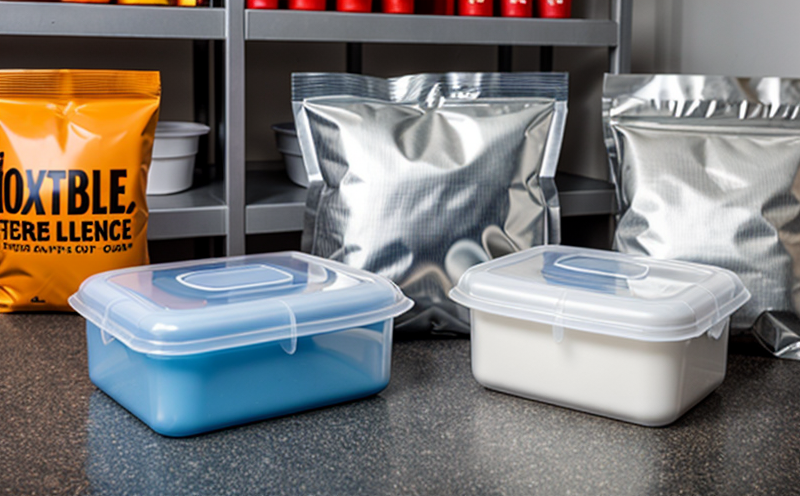ASTM D3985 Oxygen Transmission Rate Testing
The ASTM D3985 test method is a critical procedure used to measure the oxygen permeability of flexible packaging materials. This testing ensures that packaging designed to protect products from environmental factors maintains its integrity over time, especially in terms of preserving freshness and preventing spoilage.
ASTM D3985 involves placing an impermeable barrier between two chambers containing differing concentrations of oxygen. One chamber is exposed to air with a known concentration of oxygen, while the other contains nitrogen. The rate at which oxygen passes through the material under specified conditions is then measured and reported in units such as cm3/m2/day.
This test is particularly important for packaging materials used in food, pharmaceuticals, cosmetics, and other industries where product freshness and shelf life are critical. By accurately measuring the oxygen transmission rate (OTR), manufacturers can optimize their packaging to extend product lifespan while maintaining quality standards.
The testing process requires precise control over temperature, humidity, and pressure, which can vary depending on the material being tested. Understanding these variables is crucial for ensuring accurate results that reflect real-world conditions during shipment and storage.
For R&D engineers, this test provides valuable data to develop new packaging solutions tailored to specific product needs. Quality managers and compliance officers rely on OTR testing results to ensure their products meet industry standards and regulatory requirements.
Test Parameters
- Temperature range: Typically between -40°C and +125°C, depending on the material being tested.
- Humidity range: Controlled to simulate various environmental conditions.
- Pressure variations: Adjusted for different packaging applications.
Specimen Preparation
The specimens must be prepared according to ASTM D3985 guidelines, which include specific dimensions and handling procedures. The integrity of the specimen is critical as it directly impacts the accuracy of the OTR measurement.
Instrumentation
The testing equipment used in ASTM D3985 includes a gas transmission tester capable of measuring oxygen permeability at various rates. This instrument must be calibrated regularly to ensure accurate readings.
Reporting
The report generated from this test provides detailed information about the material's performance, including the calculated OTR value and any deviations observed during testing. Reporting is essential for quality control and compliance purposes.
Applied Standards
| Standard | Description |
|---|---|
| ASTM D3985-18 | This standard specifies the procedure for determining the oxygen transmission rate of flexible packaging materials. |
Environmental and Sustainability Contributions
- Reduces waste by optimizing the amount of material used in packaging.
- Promotes longer shelf life, reducing food spoilage and associated environmental impacts.
- Saves energy by extending product shelf life, thus minimizing the need for additional production runs.
The ASTM D3985 test helps manufacturers make informed decisions about their packaging materials, contributing to more sustainable practices in the industry. By reducing unnecessary material usage and prolonging product freshness, this testing supports environmental conservation efforts.
Competitive Advantage and Market Impact
The ability to accurately measure oxygen transmission rates through flexible packaging materials provides a significant competitive edge. Companies that can demonstrate superior product protection often command higher market shares due to increased customer satisfaction and loyalty.
By using ASTM D3985 testing, manufacturers can differentiate themselves by ensuring their products meet or exceed industry standards. This not only enhances brand reputation but also facilitates smoother compliance with international regulations governing packaging materials.
Real-World Usage Notes
- Used in the food industry to extend freshness and reduce waste.
- Aided in developing protective packaging for pharmaceuticals, ensuring product integrity during transit.
- Helped cosmetic companies maintain the quality of their products over extended periods.
The application of ASTM D3985 testing is widespread across various sectors, making it a valuable tool for maintaining high-quality standards in flexible packaging design and production.





